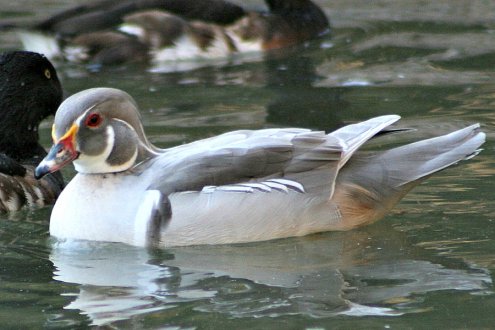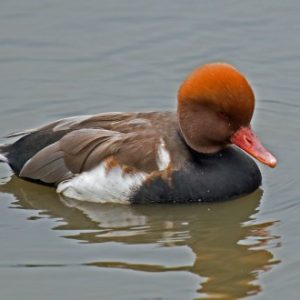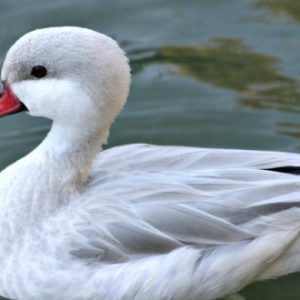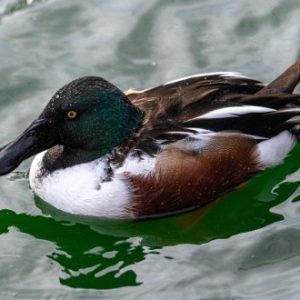Silver Wood Ducks
Aix sponsa
The Wood Duck is usually one of the first ducks a beginner or hobbyist owns if they are interested in the more exotic species of ducks. This duck is extremely hardy and a great choice for those with limited space. If you are looking for a beautiful duck and have limited space, this is the duck for you!
Description: The Silver Wood Duck is a color mutation of the Wood Duck. The male has a silver crested head with a white or light silver strip that leads from his eye to his crest and then a narrower one that leads from his bill to his crest. He has a silver chest and white outlining his wings. The female is more solid silver in color but has a white teardrop outline surrounding her eye. When compared to the normal type, which is the Wood Duck, the green shades are replaced with beautiful shades of gray and silver.
Range: Wood ducks can be found in North America, British Columbia, and Quebec, Canada. They have been known to be seen as far south as Mexico and Florida.
Habitat: Silver Wood Ducks are found in wooded swamp areas, marshes, and streams.
Status in the Wild: The population is declining due to hunting, however permits need to be acquired during duck season.
Status in Aviculture: Least Concerned
Breeding and Incubation: Beginning in April, Silver Wood Ducks will lay a clutch of about 15 cream-colored eggs. Incubation takes 28-30 days. The breeding age for a Silver Wood Duck is one year.
Lifespan: 15 years in captivity.
Mature Weight: Males: 1.5 pounds, Females: 1.4 pounds.
Housing Requirements: Because Silver Wood Ducks are good flyers, a netted aviary is recommended. These ducks are also perchers, therefore shrubs and bushes can be added to give the bird a more natural and adapted habitat.
Diet: Most of the wood duck’s diet consists of plant, fruit, and seeds, with 10 percent being animal matter such as fish, spiders, and crabs. They are very good at foraging to meet their dietary needs. The laying hens and ducklings do require a higher protein than the ones offseason. A commercial diet can be purchased to meet the needs of these birds as well as providing some of their natural feeds to encourage foraging. The commercial diet can be purchased at a feed store and contains an 18-22% formula, usually pelleted, depending on the brand. Ducklings will require a higher protein than juveniles and adults.
Notes: Wood Ducks perch and nest in trees and are comfortable flying through woods. An enclosed coop or aviary is recommended due to this.




